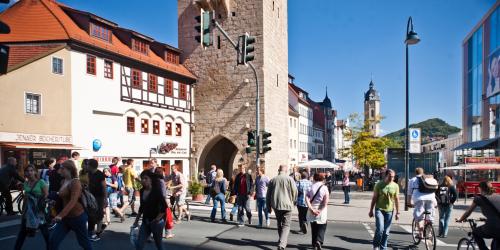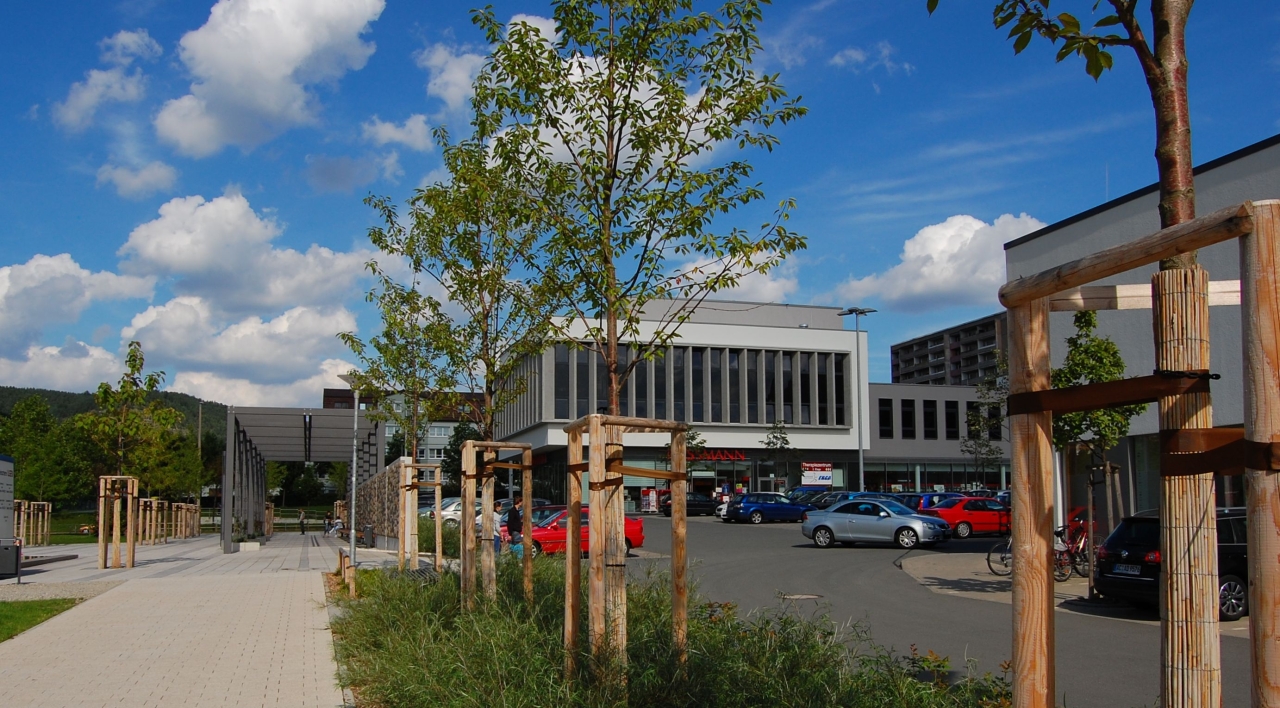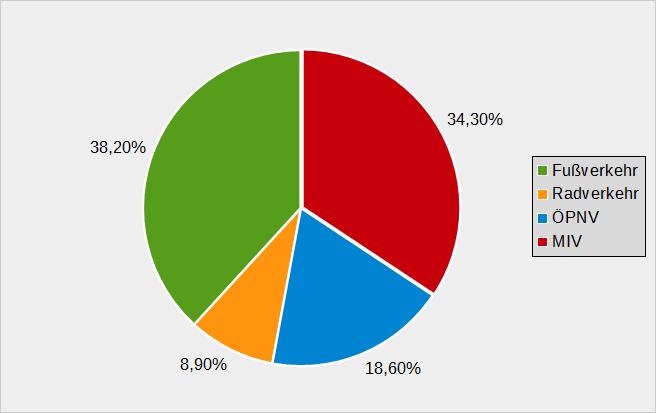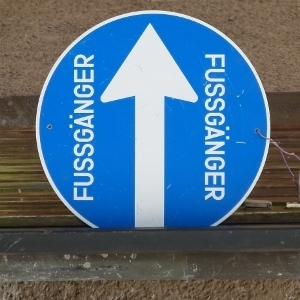
On foot
The basic geographical structure of the city of Jena (ribbon-like location in the Saale valley, essentially two settlement centres) is actually rather unfavourable for "walking" compared to more compact urban structures. However, the results of the regular representative traffic surveys (SrV) show that the city of Jena occupies a top position in Germany in terms of the proportion of journeys made on foot, at 39% (so-called journey shares). The reasons for this are complex and have a favourable effect on the most environmentally friendly transport share of the modal split.
Stadt der kurzen Wege
In the large residential areas, there are mostly good supply and service facilities close to the residential area. The large commercial locations are generally well connected to the public transport system.

The high proportion of students in the total population (> 20%) also has a positive effect. Nationwide studies show that the proportion of public transport users has increased significantly since the introduction of the semester ticket. The chains of routes that are then created also lead to a higher number of walking trips.
Verbesserung der Infrastruktur
In recent years, the city has paid attention to implementing the so-called "city of short distances" in urban land-use planning and infrastructure measures, thus directly influencing the proportion of pedestrian traffic. Internal development is promoted and seen as a goal of urban development.
Particularly in the years 2008-2012, increased financial resources were invested in the improvement of so-called pedestrian traffic facilities - i.e. pedestrian crossings (zebra crossings), pedestrian traffic lights, lane dividers for better crossing of the road, footpath widenings, separation of bicycle and pedestrian traffic.
Ziele

The aim of urban transport planning is to take even greater account of the high proportion of pedestrian traffic in the coming years. To this end, it is planned to develop a modern pedestrian concept in parallel with the update of the traffic development plan (VEP), the parking concept (2010), the cycling concept (2012) and the local transport plan (2014).
Pilotprojekt Fußverkehrsstrategie

In 2016, the German city of Hamburg was selected from a total of seventy applications as one of the five model cities for the development of basic principles for a "Guide to Action for Municipal Pedestrian Strategies". The nationwide project, carried out by the Fachverband Fußverkehr Deutschland FUSS e. V., is financially supported by the Federal Environment Agency (UBA) and the Federal Ministry for the Environment, Nature Conservation, Building and Nuclear Safety (BMUB). No municipal funds were therefore required.
In 2017, walk-throughs and expert meetings were conducted to record the situation of pedestrians in Jena and to develop initial proposals for improvements. Priority was given to the development of a network of footpaths and their gaps, in which the overcoming of the traffic axis west of the Saale and corresponding cross-connections to the city centre and to the other city districts should play a central role.
For the traffic axis from the railway passage Kulturpark "Rasenmühle" to the Camsdorfer Brücke partly concrete suggestions for improvement were elaborated. In addition, numerous other suggestions and wishes were made, such as a signposting system and better illumination of the railway underpasses. The recording of the results of the foot traffic check, a joint site inspection with discussions about possible improvements as well as the two workshops can be found here.
